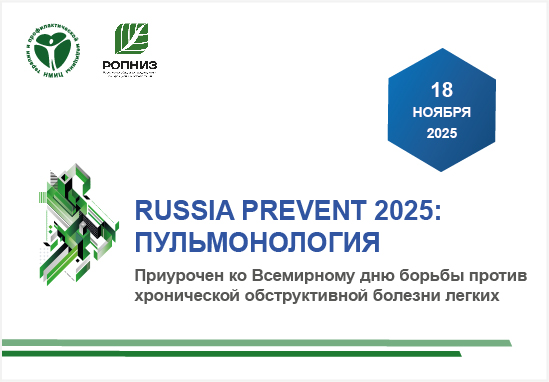Urapidil: management of complicated hypertensive crises and effects on renal function. Therapeutist’s view
https://doi.org/10.15829/1728-8800-2012-1-28-35
Abstract
Aim. To compare the effectiveness of urapidil and enalaprilat in cardiac patients with complicated hypertensive crise (HC), including the effect of the medications on renal function.
Material and methods. During 6 months, 70 patients with essential arterial hypertension (EAH), hospitalised with a diagnosis of complicated HC, were included in the study.
Results. The therapy response rates were significantly higher in the urapidil vs. enalaprilat group (96,7% vs. 73,3%, p<0,001). During the first hour of the urapidil treatment, the levels of systolic blood pressure (SBP) decreased from 210,5±13,6 to 157,8±8,3 mm Hg (p<0,05), while the levels of diastolic blood pressure (DBP) decreased from 115,7±8,5 to 86,9±9,1 mm Hg (p<0,05). In the enalaprilat group, the respective SBP and DBP reduction was from 208,1 to 182,5 mm Hg (p<0,05) and from 114,8 to 95,0 mm Hg (p<0,05). Mean BP levels in the urapidil and enalaprilat groups decreased from 147,3±6,3 to 101,7±6,4 mm Hg and from 145,9±6,1 to 118,4±7,3 mm Hg, respectively. Over 6 hours, urapidil group patients demonstrated a more prolonged, sustained antihypertensive effect. Both medications did not affect heart rate (HR) levels. In neither group, clinically significant adverse effects were registered. The changes in glomerular filtration rate (GFR) or natriuresis were non-significant. Since after 6 hours, the patients were administered other combination therapy, the risk of acute vascular events was assessed during the following hours (up to 72 hours). No cases of acute cerebrovascular events or acute myocardial infarction were registered in either study group.
Conclusion. Urapidil was more effective than enalaprilat in terms of responder number per 1 dose or BP reduction rate. Both medications did not affect HR, GFR, or natriuresis.
About the Authors
G. P. ArutyunovRussian Federation
L. G. Oganezova
Russian Federation
References
1. Арутюнов Г.П., Оганезова Л.Г. Гиперфильтрция в клинической практике. Клин нефр 2009; 1: 29–40.
2. Шальнова С.А., Баланова Ю.А., Константинов В.В. и др. Артериальная гипертония: распространенность, осведомленность, прием антигипертензивных препаратов и эффективность лечения среди населения Российской Федерации. Российский кардиологический журнал 2006; 4: 45–50.
3. Global Health risks. Mortality and burden of disease attributable to selected major risks. Geneva, World Health Organization 2009.
4. Varonj, Marik P.E. The diagnosis and management of hypertensive crises. Chest 2000; 118: 214–27.
5. Vaughan C.J, Delanty N. Hypertensive emergencies. Lancet 2000; 356: 411–7.
6. Eliott W.J. Clinical features and management of selected hypertensive emergrncies. J Clin Hypertens 2004; 6: 587–92.
7. Aggarwal M., Khan I.A. Hypertensive crisis: hypertensive emergencies and urgencies. Cardiol Clin 2006; 24: 135–46.
8. Диагностика и лечение артериальной гипертензии. Рекомендации Российского медицинского общества по артериальной гипертонии и Всероссийского научного общества кардиологов. Кардиоваскулярная терапия и профилактика 2008; 7(6): Прил. 2.
9. Rhoney D., Peacock W.F. Intravenous therapy for hypertensive emergencies, part 1. Am J Health systpharm 2009; 66: 1343–52.
10. Верткин А.Л., Городецкий В.В., Тополянский А.В. и др. Догоспитальная помощь при внезапном повышении АД и гипертоническом кризе. РМЖ том 9, № 20 СКОРАЯ ПОМОЩЬ 863–7.
11. Энрико Агабити Розеи, Массимо Салветти. Купирование неотложных и экстренных гипертензивных кризов. European Society of Hypertension Scientific Newsletter: Update on Hypertension Management 2006; 7: 28.
12. Brenner B.M., Rector F.C. Jr. The kidney. 4th ed. Philadelphia. W.B. Saunders Co 1991
13. Seldin D.W., Giebisch G. The kidney: Physiology and Pathophysiology. 2nd ed. NY Raven Press 1992.
14. Windhager E.E. Renal Physiology In Handbook of Physiology, Section 8. NY. Oxford University Press 1992.
15. Арутюнов Г.П. “Патофизиологические процессы в почках у больных хронической сердечной недостаточностью”. Ж Серд недост 2008; 9(5) (49): 234–50.
16. Moss N.G., Colinders R.E., Gottschalk C.W. Neural control of renal function. In Windhager E.E. “Renal physiology” NY, Oxford University Press 1992, chapter 22.
17. 2003 European Society of Hypertension – European Society of Cardiology guidelines for management of arterial hypertension. J Hypertension 2003; 21: 1011–53.
18. Gillis R.A., Dretchen K.L., Namath I., et al. Hypotensive effect of urapidil: CNS site and relative contribution. J Cardiovasc Pharmacol 1987; 9: 103–9.
19. Ramage A.G. The mechanism of the sympathoinhibitory action of urapidil: role of 5-HT1A receptors. Br J Pharmacol 1991; 102: 998–1002.
20. Левин О.С., Усольцева Н.И., Дударова М.А. Контроль АД в остром периоде инсульта, Consilium Medicum, Актуальные вопросы болезней сердца и сосудов 2010; 28–34.
21. Bauer J.H. Adrenergic blocking agents and the kidney. J Clin Hypertens 1985; 1: 199–221.
22. Kurt Stoschitzky. Differential effects of urapidil and doxazosin on heart rate, Eur J Clin Pharmacol (2007) 63: 259–62.
23. Моисеев В.С., Котовская Ю.В., Кобалава Ж.Д. Центральное артериальное давление: необходимый показатель для оценки сердечно–сосудистого риска и оценки эффективности антигипертензивной терапии? Кардиология 2007; 9: 15–23.
24. Заноздра Н.С., Крищук А.А. Гипертонические кризы. Киев. Здоровье 1987; 168 с.
25. Bauer J.H. Adrenergic blocking agents and the kidney. J Clin Hypertens 1985; 1:199–221.
Review
For citations:
Arutyunov G.P., Oganezova L.G. Urapidil: management of complicated hypertensive crises and effects on renal function. Therapeutist’s view. Cardiovascular Therapy and Prevention. 2012;11(1):28-35. (In Russ.) https://doi.org/10.15829/1728-8800-2012-1-28-35
























































